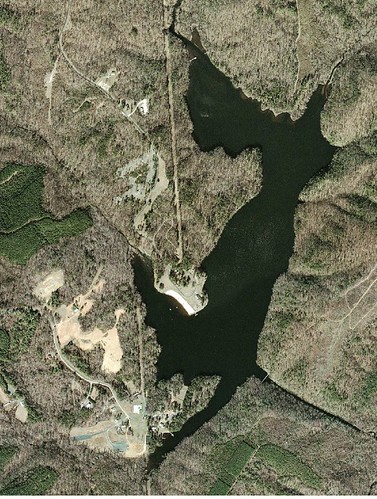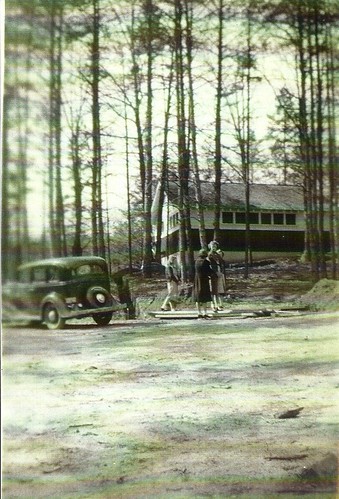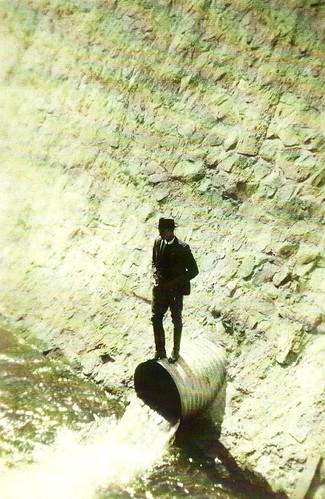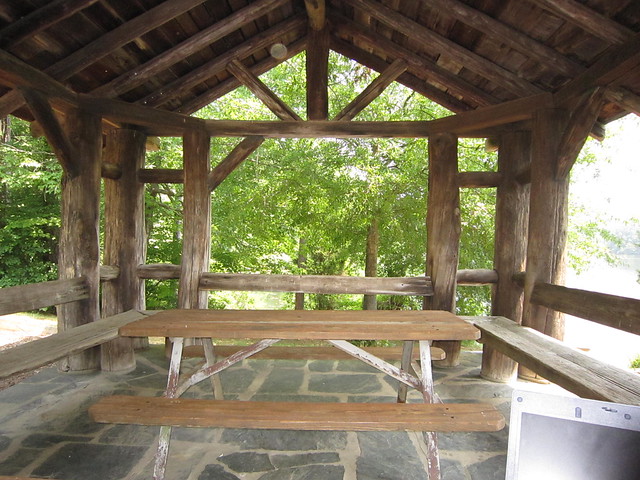In the early 1900s, the area including surrender of General Lee to General Grant on April 9, 1865.

Aerial View of Holliday Lake
Between 1936 and 1938, the Holiday Lake 4-H Educational Center and picnic shelters in the Appomattox-Buckingham State Forest. Shelter # 1 in the park still stands overlooking the lake. This was a wonderful blessing for Appomattox and Buckingham Counties since the rate of unemployment of heads of households was nearly 100% during the depression.

Holiday Lake 4-H Center in 1938
The workers lived close enough to go home every night. They worked five days a week. They were paid $1.00 a day to work from daylight until dark. They were allowed to claim a rate of $1.05 per day for each ox, mule or horse they provided for the work. Yes, the animal made more than the man!
The work was done nine months out of the year, with no work being done in December, January or February, because it was too cold. They were provided three meals, lunch being carried to the job sites.
It was a general policy of the W.P.A. to use only hand tools on projects. One reason for this was the relatively small scale nature of the projects. They used many different kinds of hand saws to cut trees for the roads, including cross-cut saws. They used drag pans (also calleddrag buckets) pulled behind a mule, ox or horse and operated by handles by a man. The pan would cut into and catch the soil, the depth of the cut being varied by the angle of the handles. This dirt would be emptied much like a wheelbarrow. This was how the grading was done. The roads were made from Route 24 to the park and all throughout the Appomattox-Buckingham State Forest.

The lake side of thedam in 1938

The creek side of the dam in 1938
The dam was built by these men using concrete mixed at the site and with stones from the area. Dynamite was used to remove large stumps and also to blast through some rock at the dam site. Because there was no market for lumber at the time, trees were used in buildings and shelters. Excess limbs and trees were usually burned on site.

The watergets higheras the lake fills up
Local legend says that many farmers worked sporadically on the job, as they had time between farm work. Once all their crops were in, they would bring their animals and their tools, work for a few days and get paid cash. Certainly the money helped their families and helped them keep their farms.
Construction of a dam was begun along Fish Pond Creek, but then relocated to Holliday Creek where a larger lake could be developed. While clearing the land, family cemeteries (including the Jones Family cemetery) were discovered. If they built the dam as planned, some of these cemeteries would have been under water. The decision was made to make a smaller dam in order to preserve the cemeteries.
Holliday Lake was completed in 1938 and used as a day use recreation area. It was managed by the U. S. Department of Agriculture. Mostly locals came to fish, hike, picnic, boat and swim in the lake.

Shelter # 1
When you come to the park, take a moment to think about these young men from the area who worked hard to build this beautiful place for us to enjoy. If you examine the structure of Picnic Shelter # 1 you will see their handiwork. It was a very good thing they did.
Read more about Holliday Lake State Park's history here.
click here, or call the park office at 434-248-6308 or by email.
Drive Time: Northern Virginia, three and a half hours; Richmond, two hours; Tidewater/Norfolk/Virginia Beach, four hours; Roanoke, two hours. Click here for a map.
